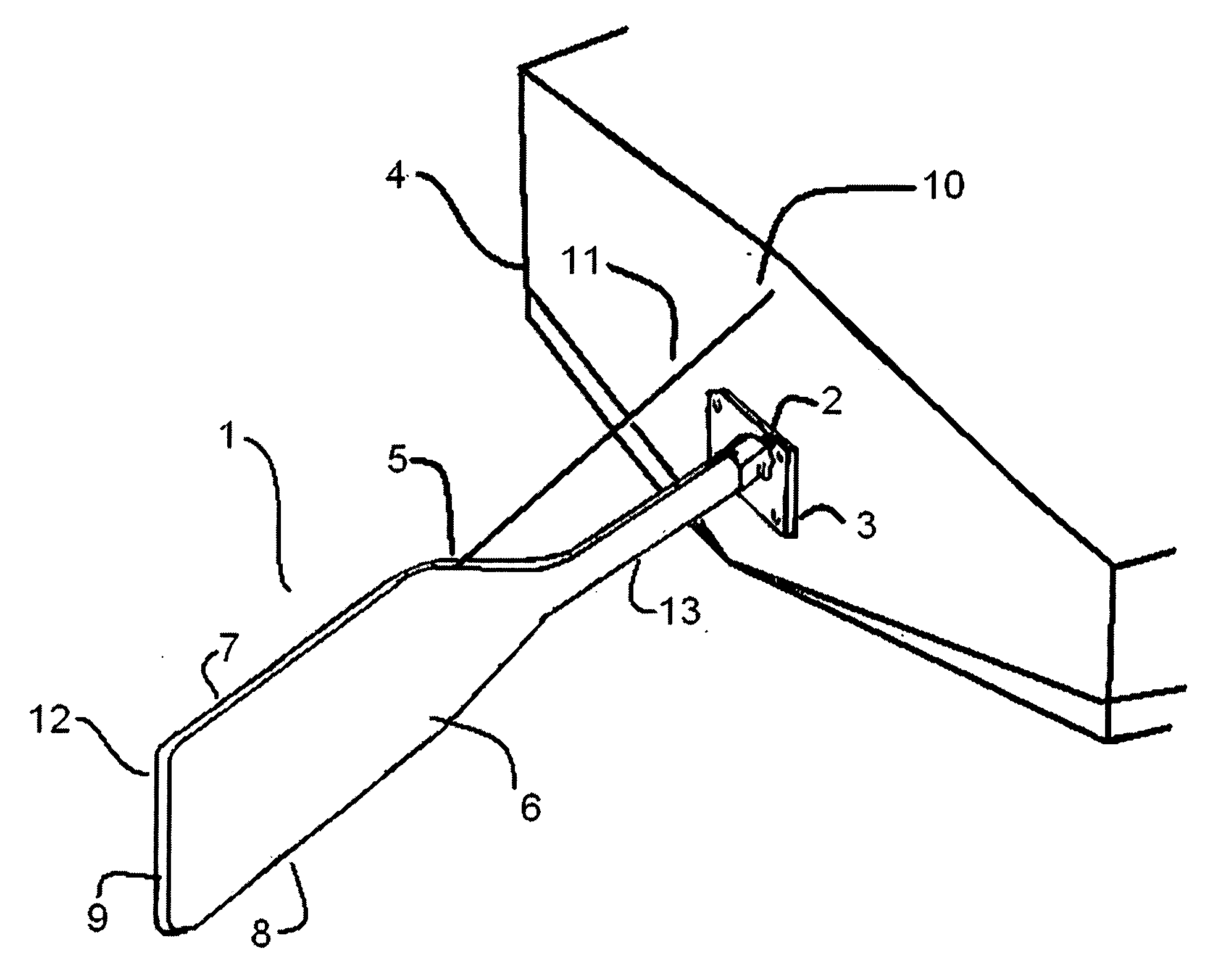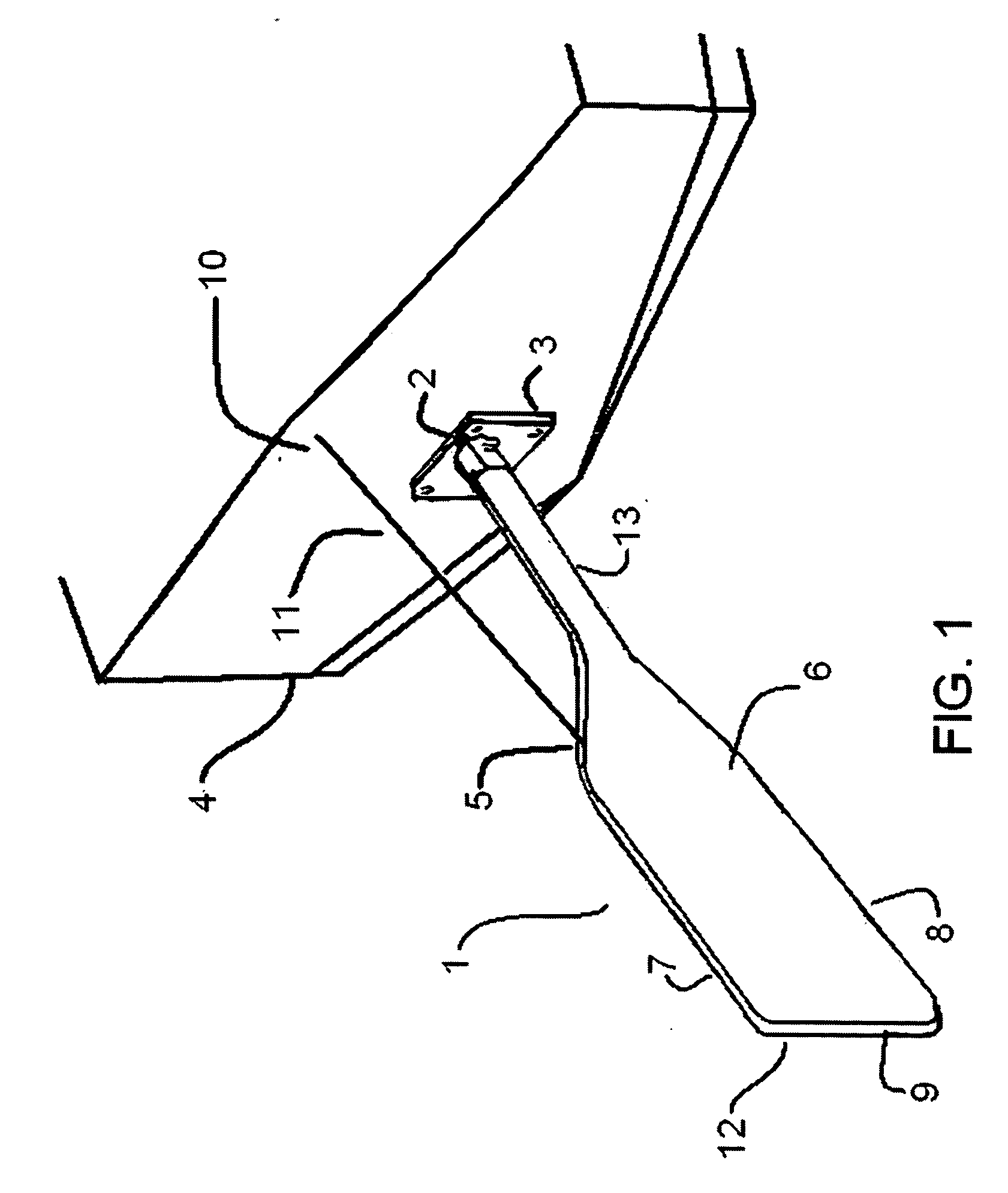Water craft stabilizing device
a technology for stabilizing devices and water craft, which is applied in the direction of special purpose vessels, vessel construction, and vessel movement reduction by foils, etc. it can solve the problems of vehicle drifting either away, vehicle being susceptible to the effects of forces, and neither solution is effective to solve the problem
- Summary
- Abstract
- Description
- Claims
- Application Information
AI Technical Summary
Benefits of technology
Problems solved by technology
Method used
Image
Examples
Embodiment Construction
[0011] Referring now to the embodiment of the invention illustrated in the drawing FIG. 1 shows the stem of a boat 4 with the stabilizing device 1 attached. The stabilizing device 1 is comprised of two stabilizing surfaces 6 and 12, two edges 7 and 8, a distal end 9 and a proximal end 13. The edge 8 angles downward from the proximal end 13 to the distal end 9. The proximal end 13 of the stabilizing device 1 may be attached hingedly to the boat 4 at an attachment plate 3 with a swivel connection 2. The swivel point 2 preferably allows the stabilizing device 1 to move or be moved in a vertical direction with respect to submerged obstacles and obstructions.
[0012] The stabilizing device 1 may further be attached to the boat 4 by a line 11 at an attachment point 5 on the stabilizing device 1 and at an attachment point 10 on the boat 4 such that the stabilizing device 1 can move or be moved in a vertical direction, but the range of downward motion is limited to a maximum desired downward...
PUM
 Login to View More
Login to View More Abstract
Description
Claims
Application Information
 Login to View More
Login to View More - R&D
- Intellectual Property
- Life Sciences
- Materials
- Tech Scout
- Unparalleled Data Quality
- Higher Quality Content
- 60% Fewer Hallucinations
Browse by: Latest US Patents, China's latest patents, Technical Efficacy Thesaurus, Application Domain, Technology Topic, Popular Technical Reports.
© 2025 PatSnap. All rights reserved.Legal|Privacy policy|Modern Slavery Act Transparency Statement|Sitemap|About US| Contact US: help@patsnap.com


